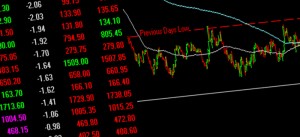In trading and investing, there are many different types of strategies that market participants employ. However, there are some of the larger and more important types of strategies. Fundamental analysis is one of them.
Fundamental analysis is extremely broad. You could say that fundamental analysis is the cornerstone of investing. The biggest part of fundamental analysis involves looking into the company’s financial statements and looking at different aspects of a company such as the revenue, assets, expenses, liabilities etc. This lies most definitely towards the mathematical side of trading, that involves a wide range of calculations to figure out stock prices in the future. Fundamental analysis has been defined well as the technique that attempts to determine a security’s value by focusing on underlying factors that affect a company’s actual business and its future prospects.
Fundamental analysis can be performed on industries or an economy as a whole. So, as opposed to technical analysis which involves analysing based on price movements, fundamental analysis goes beyond that and looks at the overall well being of a company. Some questions that the fundamental analysts might ask are- (i)Has the company’s revenue grown?, (ii)Is it making profit?, (iv)Is it able to repay its debt? or (v)How does it compare to industry competitors? There are some other also. Basically, you would look at whether a company’s stock is a good investment.
Fundamental analysis is based on the concept that the price of a stock does not fully reflect its real value. In the financial world, that real value is called the intrinsic value. Lets take an example. Suppose Microsoft is trading at $28 per share. After much analysis, you figure out that its intrinsic value stands at $34 per share. That is 21% higher than its current value. In the eyes of a fundamental analyst, it presents the greatest buying opportunity as the stock would be undervalued. In the opposite case, when the current price is $34 and you find out that it is actually worth $28, you would say that it’s overvalued. The largest assumption in fundamental analysis is that in the long run, the stock will always reflect fundamentals. But it can’t be determined how long the long run is. It could be a period of days to even years. So, that is what fundamental analysis is really about. By focusing on a company or the economy, an investor can determine its intrinsic value and find opportunities to buy or sell.
Click here for government certification in Accounting, Banking & Finance





6 Comments. Leave new
Well written!
Thanks…
Informative..!
well illustrated.
Informative article.. Good job..
Great work